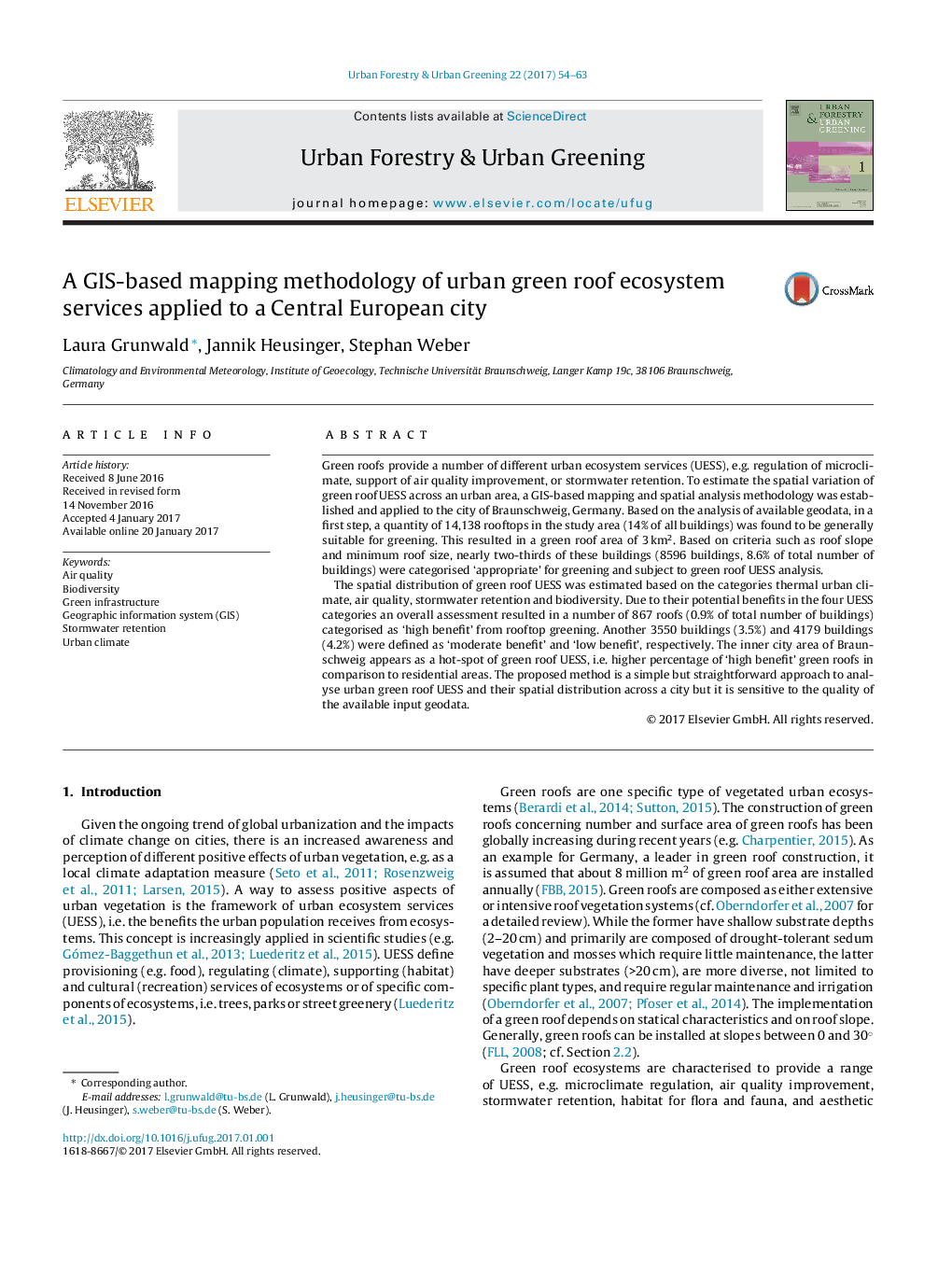| کد مقاله | کد نشریه | سال انتشار | مقاله انگلیسی | نسخه تمام متن |
|---|---|---|---|---|
| 6462002 | 1421868 | 2017 | 10 صفحه PDF | دانلود رایگان |
- Urban green roof ecosystem services (UESS) were assessed in a GIS environment.
- 3Â km2 suitable roof area for greening was found for Braunschweig, Germany.
- UESS evaluation based on thermal climate, air quality, stormwater retention, biodiversity.
- Feasible approach to define priority areas for subvention of urban green roof installation.
Green roofs provide a number of different urban ecosystem services (UESS), e.g. regulation of microclimate, support of air quality improvement, or stormwater retention. To estimate the spatial variation of green roof UESS across an urban area, a GIS-based mapping and spatial analysis methodology was established and applied to the city of Braunschweig, Germany. Based on the analysis of available geodata, in a first step, a quantity of 14,138 rooftops in the study area (14% of all buildings) was found to be generally suitable for greening. This resulted in a green roof area of 3Â km2. Based on criteria such as roof slope and minimum roof size, nearly two-thirds of these buildings (8596 buildings, 8.6% of total number of buildings) were categorised 'appropriate' for greening and subject to green roof UESS analysis.The spatial distribution of green roof UESS was estimated based on the categories thermal urban climate, air quality, stormwater retention and biodiversity. Due to their potential benefits in the four UESS categories an overall assessment resulted in a number of 867 roofs (0.9% of total number of buildings) categorised as 'high benefit' from rooftop greening. Another 3550 buildings (3.5%) and 4179 buildings (4.2%) were defined as 'moderate benefit' and 'low benefit', respectively. The inner city area of Braunschweig appears as a hot-spot of green roof UESS, i.e. higher percentage of 'high benefit' green roofs in comparison to residential areas. The proposed method is a simple but straightforward approach to analyse urban green roof UESS and their spatial distribution across a city but it is sensitive to the quality of the available input geodata.
Journal: Urban Forestry & Urban Greening - Volume 22, March 2017, Pages 54-63
